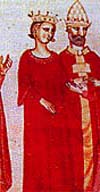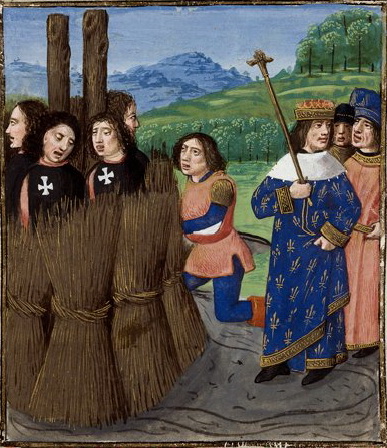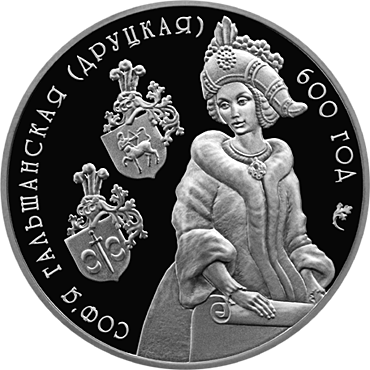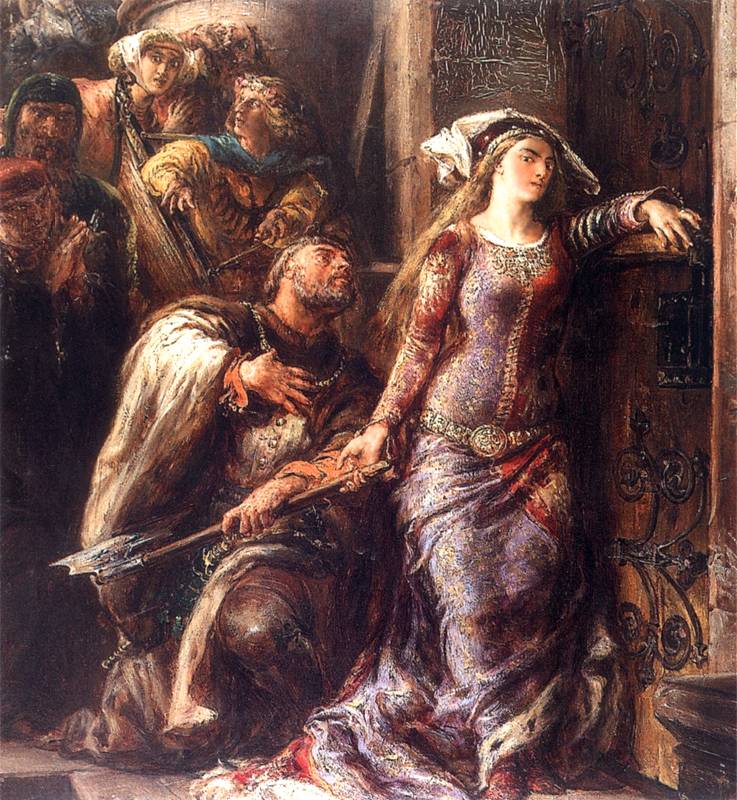|
Jure Uxoris
''Jure uxoris'' (a Latin phrase meaning "by right of (his) wife"), citing . describes a title of nobility used by a man because his wife holds the office or title '' suo jure'' ("in her own right"). Similarly, the husband of an heiress could become the legal possessor of her lands. For example, married women in England and Wales were legally prohibited from owning real estate until the Married Women's Property Act 1882. Middle Ages During the feudal era, the husband's control over his wife's real property, including titles, was substantial. On marriage, the husband gained the right to possess his wife's land during the marriage, including any acquired after the marriage. Whilst he did not gain the formal legal title to the lands, he was able to spend the rents and profits of the land and sell his right, even if the wife protested. The concept of ''jure uxoris'' was standard in the Middle Ages even for queens regnant. In the Kingdom of Jerusalem, Fulk V of Anjou, Guy of Lusig ... [...More Info...] [...Related Items...] OR: [Wikipedia] [Google] [Baidu] |
Latin
Latin ( or ) is a classical language belonging to the Italic languages, Italic branch of the Indo-European languages. Latin was originally spoken by the Latins (Italic tribe), Latins in Latium (now known as Lazio), the lower Tiber area around Rome, Italy. Through the expansion of the Roman Republic, it became the dominant language in the Italian Peninsula and subsequently throughout the Roman Empire. It has greatly influenced many languages, Latin influence in English, including English, having contributed List of Latin words with English derivatives, many words to the English lexicon, particularly after the Christianity in Anglo-Saxon England, Christianization of the Anglo-Saxons and the Norman Conquest. Latin Root (linguistics), roots appear frequently in the technical vocabulary used by fields such as theology, List of Latin and Greek words commonly used in systematic names, the sciences, List of medical roots, suffixes and prefixes, medicine, and List of Latin legal terms ... [...More Info...] [...Related Items...] OR: [Wikipedia] [Google] [Baidu] |
Mary Of Hungary
Mary, also known as Maria of Anjou (, , ; 137117 May 1395), queen regnant, reigned as Queen of Hungary and List of dukes and kings of Croatia, Croatia between 1382 and 1385, and from 1386 until her death. She was the daughter of Louis I of Hungary, Louis the Great, King of Hungary and King of Poland, Poland, and his wife, Elizabeth of Bosnia. Mary's marriage to Sigismund of Luxembourg, a member of the imperial Luxembourg dynasty, was already decided before her first birthday. A delegation of Polish prelates and lords confirmed her right to succeed her father in Poland in 1379. Having no male siblings, Mary was crowned "king" of Hungary on 17September 1382, seven days after Louis the Great's death. Her mother, who had assumed the regent, regency, absolved the Polish noblemen from their oath of loyalty to Mary in favour of Mary's younger sister, Jadwiga of Poland, Jadwiga, in early 1383. The idea of a female monarch remained unpopular among the Hungarian noblemen, the majority of ... [...More Info...] [...Related Items...] OR: [Wikipedia] [Google] [Baidu] |
Louis I Of Naples
Louis I (Italian: ''Luigi'', ''Aloisio'', or ''Ludovico'' ; 1320 – 26 May 1362), also known as Louis of Taranto, was a member of the Capetian House of Anjou who reigned as King of Naples, Count of Provence and Forcalquier, and Prince of Taranto. Louis gained the crown of Naples by marrying his half-first cousin/ first cousin-once-removed, Queen Joanna I, whose prior husband, Andrew, had died as a result of a conspiracy that may have involved both of them. Immediately after securing his status as her co-ruler, Louis successfully wrested away all power from his wife, leaving her a sovereign in name only. Their disastrous marriage resulted in the birth of two daughters, Catherine and Frances, neither of whom survived their parents. During their joint reign, Louis dealt with numerous uprisings, attacks, and unsuccessful military operations; he is generally considered an inefficient monarch. Following his death, Joanna resumed her power and refused to share it with her subsequ ... [...More Info...] [...Related Items...] OR: [Wikipedia] [Google] [Baidu] |
Isabella II Of Jerusalem
Isabella II (12124 May 1228), sometimes erroneously called Yolanda, was Queen of Jerusalem from 1212 to 1228. She was the daughter of Queen Maria of Jerusalem and her husband, John of Brienne. By marriage to Frederick II, Holy Roman Emperor, Isabella also became Holy Roman Empress and Queen of Sicily and Germany. Infant Queen Isabella II was born in Andria, in the southern Italian Kingdom of Sicily. She was the only child of Maria of Montferrat, Queen of Jerusalem, and John of Brienne. Maria was the daughter of Queen Isabella I of Jerusalem by her second husband Conrad I, and heiress, on her mother's death, of the Kingdom of Jerusalem. Maria died shortly after giving birth to Isabella II in 1212, possibly by puerperal fever. Because of this, Isabella II was proclaimed Queen of Jerusalem when she was only a few days old. Because her father John did not have a direct claim on the throne, he ruled as regent. Marriage with Frederick II During a meeting between John of Brie ... [...More Info...] [...Related Items...] OR: [Wikipedia] [Google] [Baidu] |
King Of Jerusalem
The king or queen of Jerusalem was the supreme ruler of the Kingdom of Jerusalem, a Crusader state founded in Jerusalem by the Latin Church, Latin Catholic leaders of the First Crusade, when the city was Siege of Jerusalem (1099), conquered in 1099. Most of them were men, but there were also List of queens of Jerusalem#Queens regnant of Jerusalem, five queens regnant of Jerusalem, either reigning alone ''suo jure'' ("in her own right"), or as coregency, co-rulers of husbands who reigned as kings of Jerusalem ''jure uxoris'' ("by right of his wife"). Godfrey of Bouillon, the first ruler of the Kingdom of Jerusalem, refused the title of king choosing instead the title , that is Advocate or Defender of the Church of the Holy Sepulchre. In 1100 Baldwin I of Jerusalem, Baldwin I, Godfrey's successor, was the first ruler crowned as king. The crusaders in Jerusalem were Siege of Jerusalem (1187), conquered in 1187, but their Kingdom of Jerusalem survived, moving the capital to Acre, Is ... [...More Info...] [...Related Items...] OR: [Wikipedia] [Google] [Baidu] |
Frederick II, Holy Roman Emperor
Frederick II (, , , ; 26 December 1194 – 13 December 1250) was King of Sicily from 1198, King of Germany from 1212, King of Italy and Holy Roman Emperor from 1220 and King of Jerusalem from 1225. He was the son of Emperor Henry VI, Holy Roman Emperor, Henry VI of the Hohenstaufen dynasty (the second son of Emperor Frederick Barbarossa) and Queen Constance I of Sicily of the Hauteville dynasty. Frederick was one of the most powerful figures of the Middle Ages and ruled a vast area, beginning with Sicily and stretching through Italy all the way north to Germany. Viewing himself as a direct successor to the Roman emperors of antiquity, he was Holy Roman Emperor, Emperor of the Romans from his papal coronation in 1220 until his death; he was also a claimant to the title of King of the Romans from 1212 and unopposed holder of that monarchy from 1215. As such, he was King of Germany, King of Italy, of Italy, and King of Burgundy, of Burgundy. At the age of three, he was crowned King ... [...More Info...] [...Related Items...] OR: [Wikipedia] [Google] [Baidu] |
Joan I Of Navarre
Joan I (14 January 1273 – 31 March/2 April 1305) (, Spanish: ''Juana'') was ruling Queen of Navarre and Countess of Champagne from 1274 until 1305. She was also Queen of France by marriage to King Philip IV. She founded the College of Navarre in Paris in 1305. Joan never ruled Navarre in person; it was overseen by French governors. Having direct control over the County of Champagne, she raised an army to face the invasion of the county by Henry III, Count of Bar, even capturing and imprisoning the count. She died in childbirth in 1305. Life Joan was born in Bar-sur-Seine, Champagne on 14 January 1273 the daughter of King Henry I of Navarre and Blanche of Artois. The following year, upon the death of her father, she became Countess of Champagne and Queen of Navarre. Due to her age, her mother, Blanche, was her guardian and regent in Navarre. Various powers, both foreign and Navarrese, sought to take advantage of the minority of the heiress and the "weakness" of the fem ... [...More Info...] [...Related Items...] OR: [Wikipedia] [Google] [Baidu] |
Philip I Of Navarre
Philip IV (April–June 1268 – 29 November 1314), called Philip the Fair (), was King of France from 1285 to 1314. By virtue of his marriage with Joan I of Navarre, he was also King of Navarre and Count of Champagne as Philip I from 1284 to 1305. Although Philip was known to be handsome, hence the epithet ''le Bel'', his rigid, autocratic, imposing, and inflexible personality gained him (from friend and foe alike) other nicknames, such as the Iron King (). His fierce opponent Bernard Saisset, bishop of Pamiers, said of him: "He is neither man nor beast. He is a statue." Philip, seeking to reduce the wealth and power of the nobility and clergy, relied instead on skilful civil servants, such as Guillaume de Nogaret and Enguerrand de Marigny, to govern the kingdom. The king, who sought an uncontested monarchy, compelled his vassals by wars and restricted their feudal privileges, paving the way for the transformation of France from a feudal country to a centralised earl ... [...More Info...] [...Related Items...] OR: [Wikipedia] [Google] [Baidu] |
Sophia Of Halshany
Sophia of Halshany (; ; ; – 21 September 1461 in Kraków), known simply as Sonka, was a princess of Lithuanian Alšėniškiai princely family who was Queen of Poland as the fourth and last wife of Jogaila, King of Poland and Supreme Duke of Lithuania. As the mother to Władysław III and Casimir IV, she was the co-founder of the Jagiellonian dynasty. Early life and marriage to Jogaila Sophia was the niece of Uliana Olshanska, the wife of Vytautas, and a middle daughter of , son of Vytautas' right-hand man Ivan Olshansky, and , daughter of Dmitry of Druck. Historians disagree on the identity of Dmitry: Polish historiography usually provides Jogaila's half-brother Dmitry I Starshiy while Russian historians provide Dimitri Semenovich of Rurikid origin. Her father died when she was young and the family moved to Druck to live with Alexandra's brother Siemion Drucki. Sophia grew up in a Ruthenian environment and was an Eastern Orthodox Christian (her Orthodox name is Sop ... [...More Info...] [...Related Items...] OR: [Wikipedia] [Google] [Baidu] |
Jadwiga Of Poland
Jadwiga (; 1373 or 137417 July 1399), also known as Hedwig (from German) and in , was the first woman to be crowned as monarch of the Kingdom of Poland. She reigned from 16 October 1384 until her death. Born in Buda, she was the youngest daughter of Louis I of Hungary and Poland, and his wife, Elizabeth of Bosnia. Jadwiga was a member of the Capetian House of Anjou, but she had more close forebears among the Polish Piasts than among the mostly French Angevins. In 1375, it was planned that when becoming old enough, Jadwiga would marry William of Austria and she lived in Vienna from 1378 to 1380. Louis I is often thought to have regarded her and William as his favoured successors in Hungary after the 1378 death of her eldest sister, Catherine of Hungary (1370–1378), Catherine, since the following year the Polish nobility had pledged their homage to Louis' second daughter, Mary, Queen of Hungary, Mary, and Mary's fiancé, Sigismund of Luxembourg. However, Louis died, and in 138 ... [...More Info...] [...Related Items...] OR: [Wikipedia] [Google] [Baidu] |
Martin I Of Sicily
Martin I of Sicily (c. 1374/1376 – 25 July 1409), called the Younger, was King of Sicily from his marriage to Maria, Queen of Sicily, Queen Maria in 1390 until his death in 1409. Martin's father was the future King Martin I of Aragon, and his grandparents were King Peter IV of Aragon and Eleanor of Sicily. In February 1390 he married Maria of Sicily, born in 1362/1363. In 1392 he returned with Maria to Sicily with a military force and defeated a group of opposing barons. In 1394 the couple had their only son Peter of Aragon, Heir of Sicily, Peter, crown prince of Sicily, who died in 1400. He ruled Sicily jointly with Maria until her death at Lentini on 25 May 1401. At that time, he repudiated the Treaty of Villeneuve (1372) and ruled Sicily alone. After his death in 1409 in Cagliari, Sardinia, his father, by then king of Aragon, ruled Sicily as Martin II. After Maria's death Martin I the Younger married at Catania on 21 May 1402 by proxy and on 26 December 1402 in person Blan ... [...More Info...] [...Related Items...] OR: [Wikipedia] [Google] [Baidu] |








